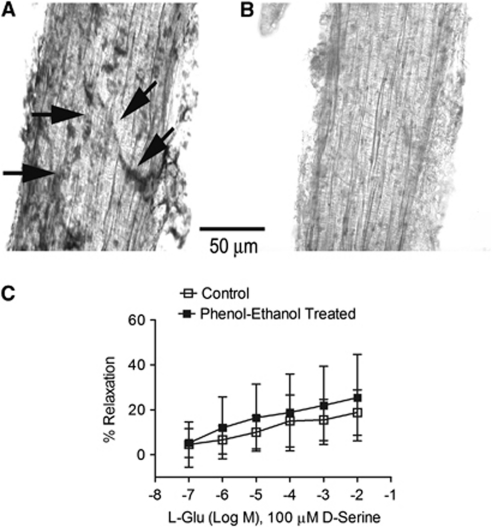Figure 5.
N-methyl--aspartate (NMDA) receptor-mediated vasodilation persists following chemical denervation of middle cerebral arteries (MCAs). Isolated mouse MCAs were mechanically stripped and treated with vehicle (A) or 1.35% ethanol with 0.15% phenol for 3 minutes (B) to cause chemical denervation. Vessels were either analyzed for nitric oxide (NO)-containing nerve endings by nicotinamide adenine dinucleotide phosphate (NADPH)-diaphorase staining (A, B) or analyzed for responses to glutamate/-serine by pressure myography (C). (A) Untreated MCA has NADPH-diaphorase-positive nerve fiber tracts (arrows). (B) Vessels treated for 3 minutes showed no indication of NADPH-diaphorase staining and therefore neuronal NO. (C) Both intact and denervated vessels relaxed significantly in a concentration-dependent manner (P<0.05, 0.1 μmol/L versus 10 mmol/L) and there were no significant differences between the groups at any dose. Data are presented as mean values±s.d. for six MCAs. Data were compared using two-way analysis of variance (ANOVA) for repeated measures, followed by the Bonferroni test for selected pairs.

